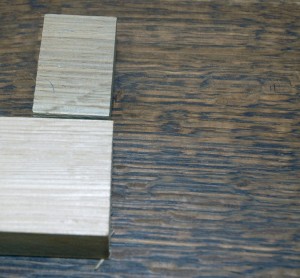
Clockwise, beginning with the small offcut: fumed oak, fumed oak and boiled linseed oil, and unfinished.
Flatsawn–cut so that the tree’s annular rings run parallel to face of the board–white oak is less than distinguished, featuring a porous grain and and a course figure. Take the same log and quarter saw, or slice it so the annular rings rung perpendicular to the board’s face, the wood takes on a whole new character, showing a vertical grain overlayed with the flecked pattern of the tree’s medullary rays. And fuming the wood–exposing it to the fumes of ammonia–creates a chemical change in the wood as the ammonia reacts with tannic in the heartwood to darken it. A top coat of finish completes the effect, leaving the wood a rich, warm brown. Continue reading
